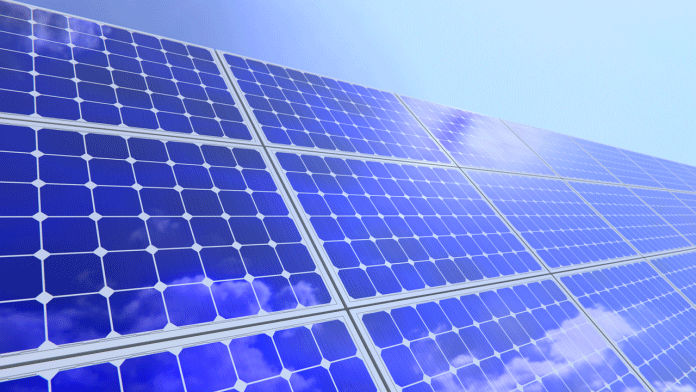Scientists from the University of Wisconsin-Madison in the US have developed high-performance, lateral solar cell. This solar cell has the potential to power personal devices like wearable medical sensors, smartwatches, and auto-focusing contact lenses. According to scientists, it beats other comparable solar devices and generates more energy.
These photovoltaic arrays generate electricity from charges moving vertically. Scientists captured current from alongside or parallel moving charges.
Scientists hope that these solar cells will become next big thing for compact devices in future. Arranging electrodes horizontally allow scientists to avoid construction process of the conventional solar cell.
The cells are made up of two electrodes. There is neighboring semiconducting material like bread slices around the meat in a sandwich.
When light reaches top slice, charge passes through filling the bottom layer. Thus, it creates an electric current. Two jobs are done by one layer in the top-down arrangement. The jobs are: it must allow light and transmits charge.
Thus, the material for one electrode in the conventional solar cell must be not only highly transparent but also electrically conductive. Very few substances perform both tasks very well.
READ ALSO: Optically Transparent Wood (TW) could be used for solar panels
Hongrui Jiang, the professor at UW-Madison, said, “From a fabrication point of view, it is always easy to make side-by-side structures. The Top-down structures require to be made in multiple steps and then aligned. This is very challenging at small scale.”
Therefore, scientists have created a densely packed array of miniature electrodes on transparent glass’ top. They choose to create it instead of creating its solar cell sandwich one layer at a time. Resulting structure differentiates light-harvesting and charge-conducting functions between the two components.
Generally, other structures have lots of wastage of volume because of mismatched electrodes. The new lateral solar cell slightly converts 1.8% of incoming light into useful electricity with above 5.2% efficiency.
READ ALSO: STPV: New solar cell converts sun’s heat into usable energy
Creation of lateral solar cell allows scientists to make very compact lateral structures that take advantage of the full volume. But scientists are now concentrating on make this lateral solar cell smaller and efficient. For that purpose, they are exploring materials that increase transparency and conductivity.
